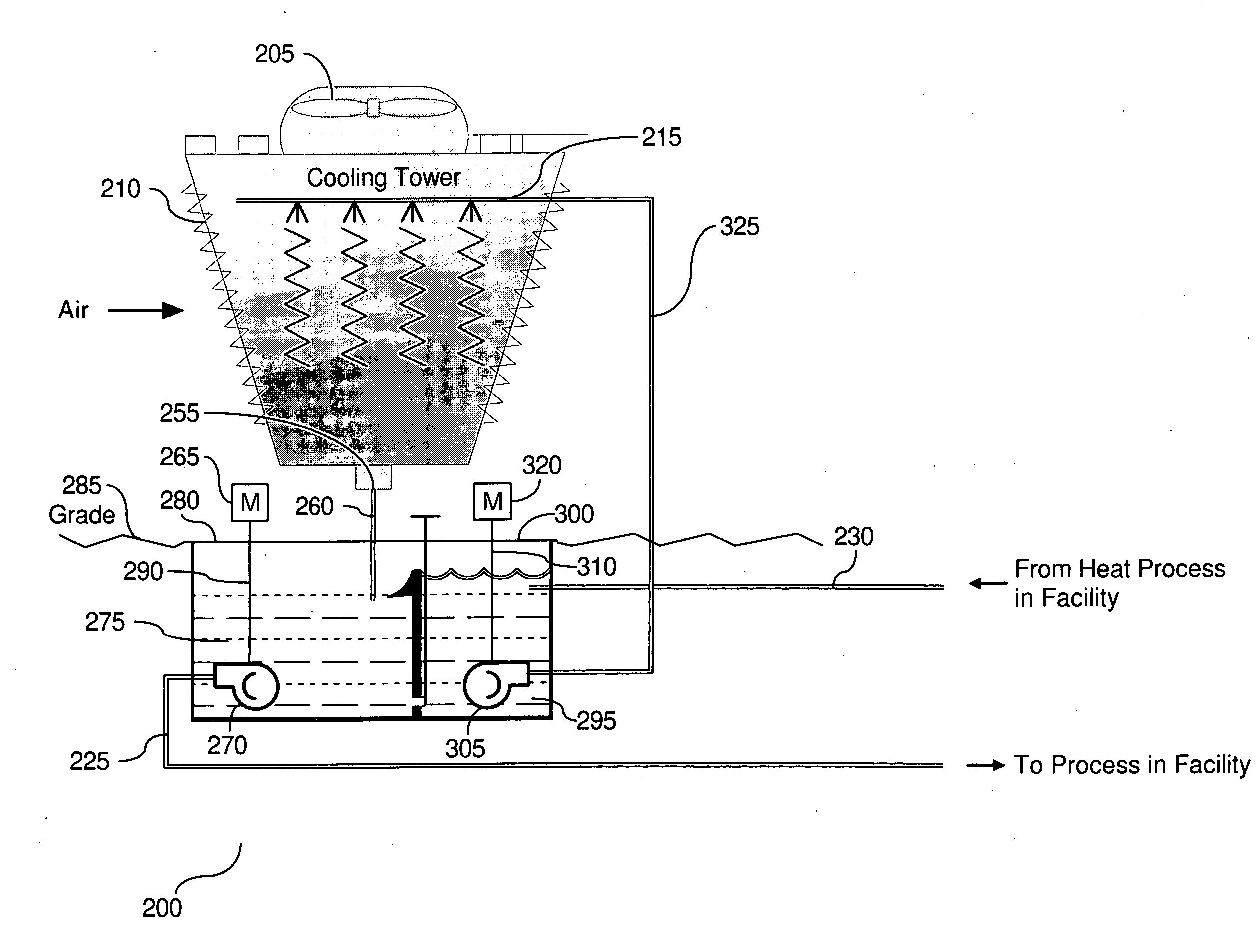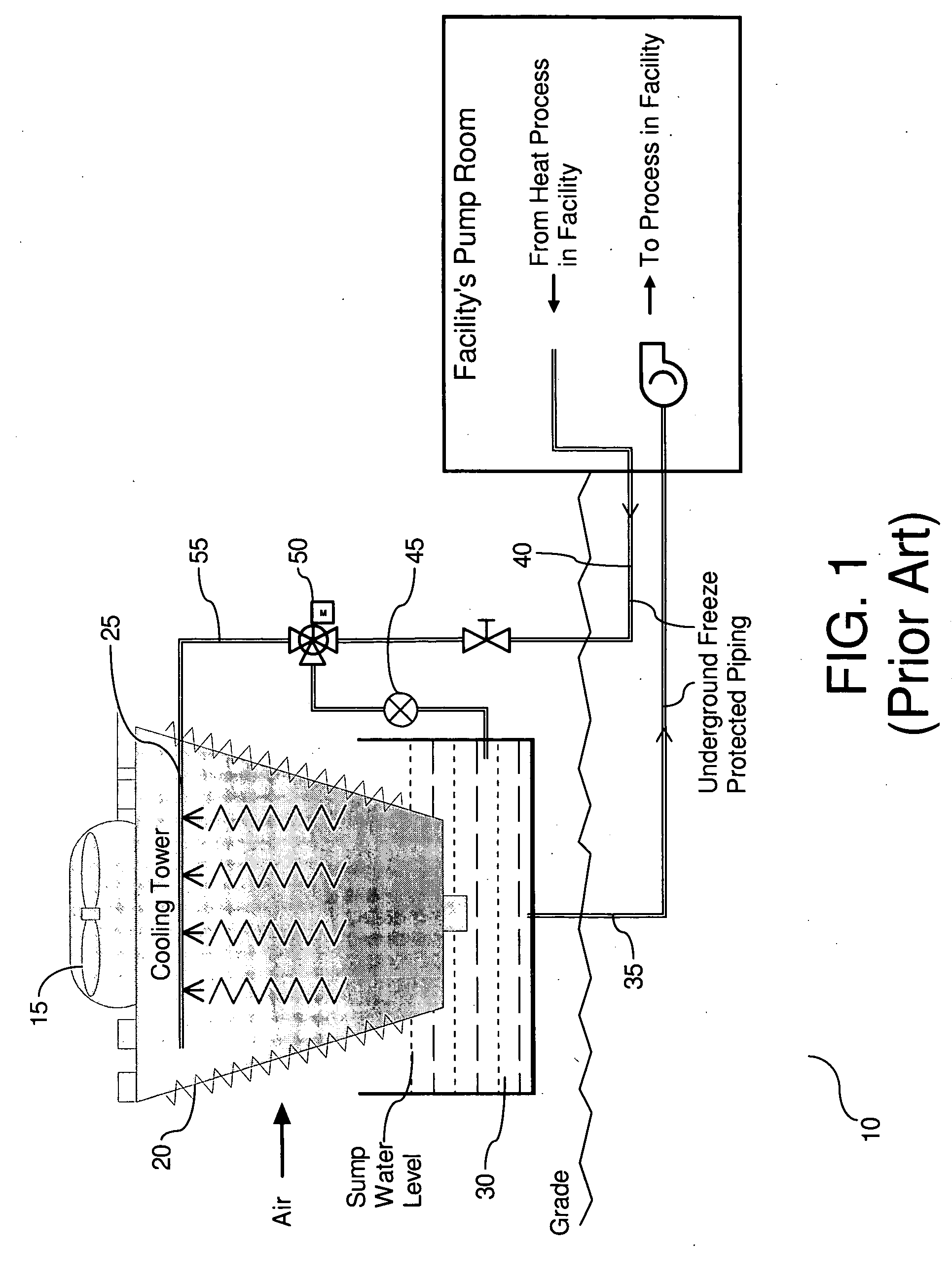Collector sump cooling tower
a cooling tower and collector technology, applied in the direction of trickle coolers, machines/engines, combustible gas purification/modification, etc., can solve the problems of affecting the operation of the cooling tower, the risk of above-grade elements freezing, and the surrounding property, so as to reduce energy consumption, simplify the operation, and eliminate the risk of freezing
- Summary
- Abstract
- Description
- Claims
- Application Information
AI Technical Summary
Benefits of technology
Problems solved by technology
Method used
Image
Examples
Embodiment Construction
Technical Details
[0022] Turning now to the preferred embodiment, FIG. 3 is an illustration of the preferred embodiment of the water cooling tower (200). The embodiment shown in FIG. 3 includes an above grade cooling tower fan (205), an above grade fill (210), and an above grade nozzle or hot pan (215). These three components may be arranged in various configurations to enhance getting water distributed on the fill (210) so that air flow from the fan (205) can cause accelerated evaporation. For example, in some cases the water drips down through the fill (210) and the fan air is pulled up; counterflow. In other systems the water drips down through the fill (210) and the air moves across sideways; crossflow. Some systems use fine spray nozzles under pressure, others use holes in the bottom of a long flat pan to distribute the water. Many cooling towers use fans mounted low that force air up through the fill; forced draft. Other towers use fans on the top that pull the air up; induced...
PUM
| Property | Measurement | Unit |
|---|---|---|
| height | aaaaa | aaaaa |
| volume | aaaaa | aaaaa |
| mixing | aaaaa | aaaaa |
Abstract
Description
Claims
Application Information
 Login to View More
Login to View More - R&D
- Intellectual Property
- Life Sciences
- Materials
- Tech Scout
- Unparalleled Data Quality
- Higher Quality Content
- 60% Fewer Hallucinations
Browse by: Latest US Patents, China's latest patents, Technical Efficacy Thesaurus, Application Domain, Technology Topic, Popular Technical Reports.
© 2025 PatSnap. All rights reserved.Legal|Privacy policy|Modern Slavery Act Transparency Statement|Sitemap|About US| Contact US: help@patsnap.com



